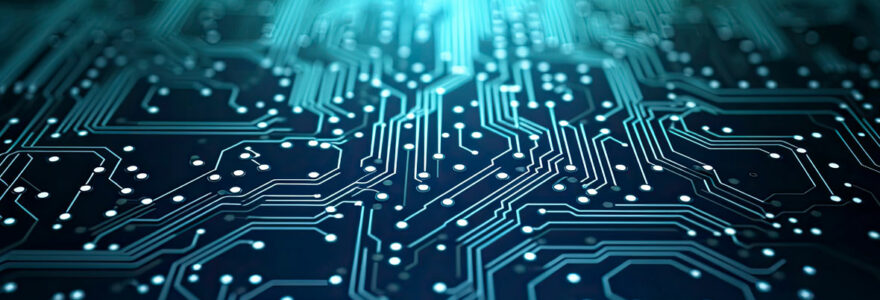Peering into the world of technology, one marvels at the swift strides made in the field of microvia technology. Recent advancements have revolutionized the manufacturing of printed circuit boards (PCBs) with a special focus on laser drilling techniques. Delving deeper into this topic, one finds that ultraviolet laser drilling has taken precision to an entirely new level, challenging the traditional CO2 and femtosecond lasers in microvia creation. But the revolution doesn't stop there; laser technology has had a notable impact on reducing via size and increasing board density. The advent of High-Density Interconnect (HDI) technology has further redefined the PCB design landscape. It plays a pivotal role in enabling multi-layer PCBs for compact devices, adding a new dimension to electrical performance and signal integrity. HDI also boasts cost-effectiveness and production efficiency in PCB manufacturing. The industry, however, faces its share of challenges, especially in microvia copper plating, demanding innovative solutions for enhanced reliability. In the meantime, emerging materials have begun to play a significant role in microvia fabrication and performance, promising a future full of exciting possibilities.
Advancements in laser drilling techniques for microvias
Among the major strides in the realm of technology, the evolution of laser drilling has been significant, specifically within the production of microvias. UV and CO2 lasers are at the forefront of these advancements, offering unmatched precision for microvia drilling.
Innovations in uv laser drilling for enhanced precision
UV lasers have emerged as a popular choice for drilling microvias, owing to their capacity to produce high-quality holes. These advanced laser drilling techniques have played a pivotal role in enhancing the quality of microvias, leading to reliable connections within PCBs. Furthermore, the integration of CAD software has optimized the laser trajectories and even distribution of microvias.
Comparing co2 and femtosecond lasers in microvia creation
CO2 lasers, on the other hand, have their unique set of advantages. They have shown potential in reducing the costs and manufacturing timelines of PCBs. The femtosecond laser, a newer entrant, offers an edge with its high-speed and precision-controlled drilling capabilities.
Impact of laser technology on reducing via size and increasing board density
Laser advancements are not just limited to drilling techniques. They have also contributed to the development of new depth control methods, ensuring the reliability of connections. Innovation in laser treatments for high-tech materials used in multilayer PCBs is another area of significant progress. These advancements have led to a reduction in via size, thus increasing board density, a critical aspect for modern-day compact devices.
Impact of high-density interconnect (hdi) technology on pcb design
Emerging technologies have drastically transformed the electronics industry. One of the most significant advancements has been the high-density interconnect (HDI) technology, which has revolutionized the pcb design process. HDI technology, being a type of advanced circuit design method, allows for a much higher wiring density per unit area compared to traditional methods. This increased density has led to smaller and more efficient devices, as it enables multi-layer pcbs to fit into a compact space.
Role of HDI in enabling multi-layer pcbs for compact devices
HDI plays a vital role in enabling multi-layer pcbs for compact devices. The technology permits a higher number of interconnections in a smaller space, thereby contributing to the miniaturization of electronic devices. The integration of HDI into pcb design has opened up new avenues in the electronics industry.
Benefits of HDI for electrical performance and signal integrity
Another significant advantage of HDI is its positive impact on electrical performance and signal integrity. With the use of HDI technology, pcbs have demonstrated improved functionality and reliability. HDI also affects the cost and production time of pcbs, proving to be more cost-effective and efficient in manufacturing.
Cost-effectiveness and production efficiency in HDI pcb manufacturing
The implementation of HDI in pcb design has not only improved the performance of these printed surfaces but has also proven to be economical. The production efficiency of HDI pcb manufacturing has significantly reduced the cost and time of production, thereby benefiting the electronics industry.
Overall, the impact of HDI technology on pcb design has been profound, marking a significant shift in the industry. The future trends in HDI technology are set to further revolutionize pcb design, making it an essential topic of interest for professionals in the field.
For a deeper understanding of the marvels of HDI technology, especially the role of PCB microvias, industry professionals and enthusiasts are encouraged to delve into reliable resources and continue this exciting exploration.
Challenges and solutions in microvia copper plating for enhanced reliability
Within the rapidly evolving industry of circuit board manufacturing, microvia copper plating faces unique challenges. The need for uniformity and high-quality plating in high-density microvias presents a significant hurdle. Nevertheless, innovative solutions are emerging to tackle these issues, leading to an increase in the reliability of copper vias. highlights the predicament of plating process optimization, aimed at improving the dependability of microvias.
Minimization plays a considerable role in copper plating techniques, with strategies focused on adapting to these changes. It's noteworthy that the introduction of advanced technology in quality control and microvia inspection has contributed to the ensured reliability of the finished product. These technological advances have not only minimized the impact of thermal stress on copper vias but also led to the development of new methods in the manufacturing process. Innovative solutions have been established to decrease production costs while elevating the quality of copper vias, which has been a significant breakthrough in the industry.
Emerging materials and their role in microvia fabrication and performance
Advancements in nanomaterials are increasingly influencing the functionality and reliability of microvias in high-density circuits. These emerging materials, taking on a remarkable role, have resulted in significant improvements in conductivity, thus enhancing the overall performance of these small-scale electronic components. provides an extensive study on this.
Diverse applications have been transformed through the advent of advanced polymers. Their impact on microvia production has been profound, simplifying fabrication processes while simultaneously refining their electrical effectiveness. Advanced polymers have been integral to the creation of stacked and offset vias for both flex and rigid circuits, with 3D print technologies leading the innovation.
Ceramic-based composite materials are another innovation, offering substantial benefits for thermal management and durability of microvias. The thermal properties of ceramic composites, combined with their structural integrity, ensure the longevity and consistent performance of these advanced microvia systems. highlights in-depth research on this topic.
Emerging conductive alloys are contributing to the reduction of contact resistance, thereby enhancing the efficiency of routing layers. Laser direct writing technology allows for the precise and rapid production of miniaturized electronic components, using microvias for a superior assembly process.
Current trends are focusing on the use of microvias in PCB assembly for advanced and miniaturized electronic applications. The continual evolution of these technologies will undoubtedly lead to further advancements in the field of high-density interconnect (HDI) technology.

